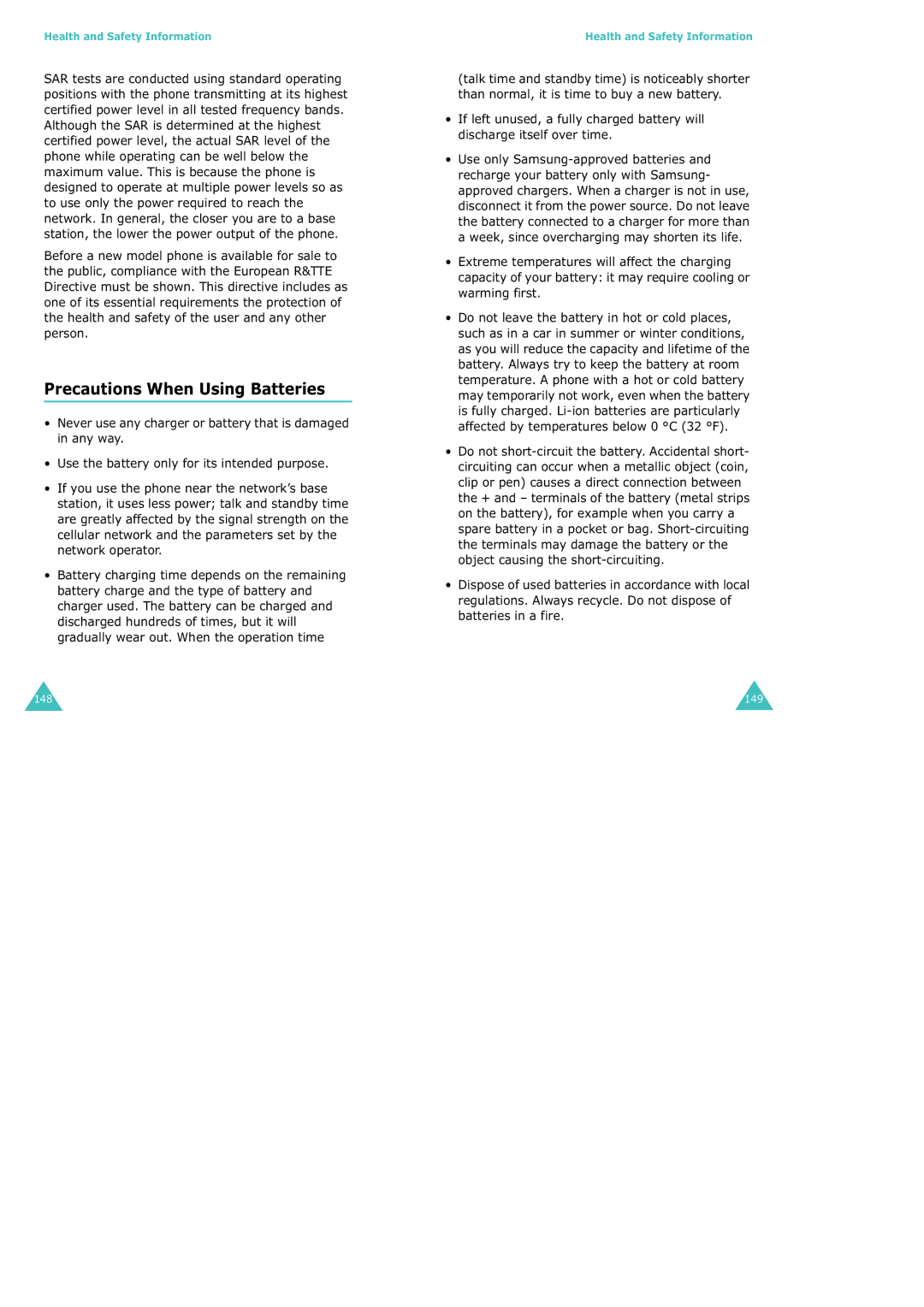
Health and Safety Information
SAR tests are conducted using standard operating positions with the phone transmitting at its highest certified power level in all tested frequency bands. Although the SAR is determined at the highest certified power level, the actual SAR level of the phone while operating can be well below the maximum value. This is because the phone is designed to operate at multiple power levels so as to use only the power required to reach the network. In general, the closer you are to a base station, the lower the power output of the phone.
Before a new model phone is available for sale to the public, compliance with the European R&TTE Directive must be shown. This directive includes as one of its essential requirements the protection of the health and safety of the user and any other person.
Precautions When Using Batteries
•Never use any charger or battery that is damaged in any way.
•Use the battery only for its intended purpose.
•If you use the phone near the network’s base station, it uses less power; talk and standby time are greatly affected by the signal strength on the cellular network and the parameters set by the network operator.
•Battery charging time depends on the remaining battery charge and the type of battery and charger used. The battery can be charged and discharged hundreds of times, but it will gradually wear out. When the operation time
Health and Safety Information
(talk time and standby time) is noticeably shorter than normal, it is time to buy a new battery.
•If left unused, a fully charged battery will discharge itself over time.
•Use only
•Extreme temperatures will affect the charging capacity of your battery: it may require cooling or warming first.
•Do not leave the battery in hot or cold places, such as in a car in summer or winter conditions, as you will reduce the capacity and lifetime of the battery. Always try to keep the battery at room temperature. A phone with a hot or cold battery may temporarily not work, even when the battery is fully charged.
•Do not
•Dispose of used batteries in accordance with local regulations. Always recycle. Do not dispose of batteries in a fire.
148 | 149 |
